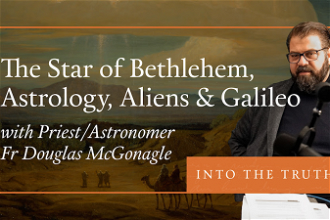Satellite mission launches Pope's writings into space

Photo by NASA on Unsplash
Source: Vatican Media, Spei Satelles
A rocket carrying a satellite with a tiny nanobook took off overnight, at 11.19 pm Italy time, from Vandenberg Space Base in California. It contains words of hope of Pope Francis promoting global unity in the face of the pandemic, words the Pope gave alone in a rain-soaked St Peter's Square on 27 March 2020.
Spei Satelles, 'guardian of hope,' is the name of the space mission, promoted by the Vatican's Dicastery for Communication. The Italian Space Agency has coordinated the project, Italy's National Research Center (CNR) made the nanobook, and the Department of Mechanical and Aerospace Engineering at Turin's Polytechnic University built the satellite, while students at Salesian University Institute of Venice created the logo for the initiative. The IDCGE of Buenos Aires also participated in the project, while the Digital Apostolate of Turin handled the pastoral and cultural coordination of the mission.
The nanobook made by the CNR's Institute of Photonics and Nanotechnology is a small silicon plate roughly two by two millimetres, that contains a binary code engraving of the Pope's words and photos from the 2020 Statio Orbis in St Peter's Square during the height of the pandemic, as featured in the book "Why are you afraid, do you still have no faith?" by publisher Libreria Editrice Vaticana. Pope Francis' words had to be translated into a series of "0's" and "1's" because it was impossible to adapt traditional printing fonts to such small sizes. Each hole engraved at the "1" character - the "0" remains a blank space - is less than a thousandth the thickness of a human hair.
Cubesat 3U is the type of satellite designed over five months by the Polytechnic University of Turin on which the nanobook was loaded and launched into space. It measures 34x10x10 centimetres and weighs nearly three kilograms. On the outside it is covered with solar panels necessary for generating power, while inside, in addition to the nanobook, there are two on-board computers, a battery, sensors for measurements, small magnets for stabilization and two ultra-high frequency UHF communication systems. The latter will transmit through two antennas messages of hope Pope Francis has given and which can be picked up by radio enthusiasts around the world.
After the launch, the satellite, whose high-tech systems were blessed by Pope Francis last 29 March, reached space via the Falcon 9 carrier rocket from Space X and, thanks to the ION orbital transfer vehicle from Italian company D-ORBIT, will be positioned 525 kilometers above the Earth in synchrony with the sun's rotation. It will then fly over every point on the Earth's surface at the same local solar time. Each time it rises, those connected to the 437.5 Mhz frequency can be reached with the Pope's words of comfort and encouragement on the journey of hope.
In addition, the name of those who have registered on the official website of Spei Satelles will be placed on an additional chip carried in the satellite. Hundreds have done so by making a commitment to offer a gesture of mercy back on Earth. Maria from Mexico, for example, will display messages of peace in her store. Andrea, a 17-year-old US student, will write a letter of thanks to his teachers for the love and dedication with which they live their mission, while Fr. Renato from Italy is committed to helping young people express themselves online with intelligence, respect and empathy. Given the success of the initiative, it will be possible to sign up even after the launch and names will be written remotely on the chip memory from the ground control station.
"Pope Francis' message in Space is a sign and image of tenderness and blessing for the world," explained Mgr Lucio Adriàn Ruiz, secretary of the Dicastery for Communication and creator of the Spei Satelles project. "Today this project becomes a reality thanks to the many institutions and people who have chosen to unite and team up. The immensity of space always makes us dream, and today we all need to dream together again, with the hope that peace, so desired by humanity, will return to the world by engaging all of us. I take this union and communion," he reiterated, "as a first great fruit and sign of hope. Working together to bring this sign of hope makes us greater friends with each other, brothers and sisters, 'Fratelli tutti."
The Spei Satelles mission, said Silvia Natalucci, head of the Italian Space Agency, is "a perfect example of how peaceful use of technologies can contribute to the creation of a shared culture of peace and hope among peoples." For Andrea Notargiacomo, head researcher at the CNR, the initiative "represents a unique combination of science, technology, culture and faith, demonstrating how the interaction between different skills, ideas and thoughts can generate strong innovation and, at the same time, be a valuable source of human and social enrichment. "We will have the opportunity to increase our knowledge, both technical and scientific, and together help to spread words of hope for our future," says Sabrina Corpino, who guided the Polytechnic students in the realization of the satellite.
The entire mission, according to the official website of Spei Satelles is "a strong, evocative, universal, engaging gesture that calls humanity to hope and the need for it to be cultivated with concrete, material or spiritual gestures such as the one performed by the Pope in that empty square." It is also a testimony to how fruitful the relationship between science, technology and faith can be, as well as a message of inclusiveness given the numbers of people, especially young people, who collaborated in many ways with the Pope on the project. The mission also responds to the "need for a strong call, in times of war, for a sign for peace, for brotherhood, for sharing." "A technology," it further reads, "symbolic, that is a seed of hope."
Also to be considered in a similar way was the mission that took place in the Norwegian archipelago of Svalbard in 2022 when, 1,200 kilometers from the North Pole, a delegation with the participation of Mgr Lucio Adriàn Ruiz, secretary of the Dicastery for Communication and creator of the Spei Satelles project, went to the world storage bank that keeps the seeds of plants from all over the world, also to deposit the Pope's nanobook there.
LINKS
Spei Satelles: www.speisatelles.org/en/site/index
Fratelli Tutti: www.vatican.va/content/francesco/en/encyclicals/documents/papa-francesco_20201003_enciclica-fratelli-tutti.html
Pope Urbi et Orbi Message 27 March 2020: www.indcatholicnews.com/news/39230


















